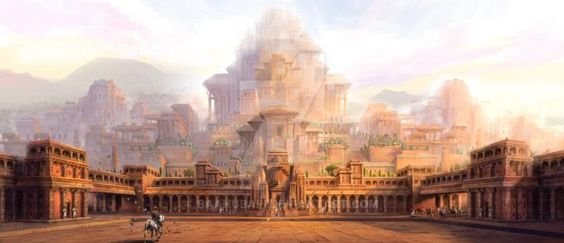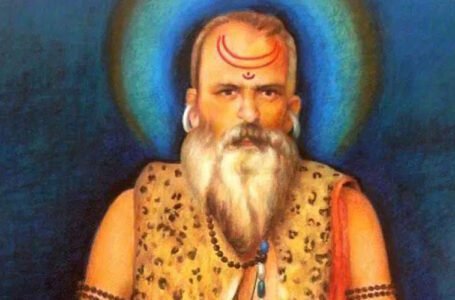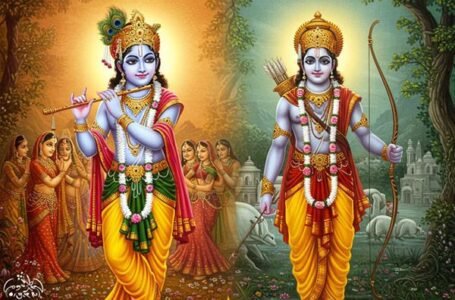MahaJanpada : Magadha – The reign of Mauryans

North-eastern India’s Magadha, an ancient kingdom, was once located in what is now the state of Bihar. Between the sixth and eighth centuries after the Common Era, it served as the foundation for several larger kingdoms or empires. The strategic location of Magadha in the Ganges (Ganga) River valley, which allowed it to dominate communication and trade on the river, may account for its early significance. Additionally, the river served as a conduit between Magadha and the prosperous ports in the Ganges delta.

Eastern Bihar’s kingdom of Anga was annexed to Magadha by King Bimbisara of the Haryanka family. Later, Kosala was annexed. The Nanda (4th century BCE) and Mauryan (4th–2nd century BCE) dynasties maintained Magadha’s dominance; during this time, the empire nearly covered the whole Indian subcontinent. Magadha saw a downturn in the first centuries CE, but the Gupta dynasty’s ascent in the fourth century brought it back to a position of prominence. These imperial dynasties not only began by establishing their authority in Magadha, but in each case Pataliputra (near modern Patna) served as the imperial capital, enhancing Magadha’s stature. The Greek historian Megasthenes’ Indica (about 300 BCE) and the trip journals of the Chinese Buddhist pilgrims Faxian and Xuanzang (around 4th–5th and 7th century CE) both contain lively tales of Pataliputra and Magadha. Buddhism considered many locations in Magadha to be holy. The Muslims took control of Magadha toward the end of the 12th century.
The Nanda dynasty ruled over Magadha in northern India from approximately 343 to 321 BCE. Like all pre-Mauryan dynasties, the Nanda dynasty predated the reign of the Mauryas, and little is known about it as a combination of fact and legend. Native customs, both Brahmanical and Jaina, imply that Mahapadma, the dynasty’s founder, had a clearly low social origin, which is supported by classical research. In or about 321 BCE, when Chandragupta built the framework for Mauryan authority, the Nanda line ended with him.

Despite living alone, Chanakya became a counselor to Chandragupta, who established the Mauryan empire in northern India and ruled from 321 to 297. He played a key role in Chandragupta’s victory over the mighty Nanda dynasty at Pataliputra in the Magadha area. Chandragupta’s manual was ultimately Chanakya’s book. The government’s 15 phases are covered in each of its 15 divisions, which Chanakya summarises as “the science of punishment.” He publicly counsels the creation of a complex spy network that penetrates all spheres of society and supports covert political assassination. The book, which had been lost for centuries, was found in 1905.
Bimbisara was one of the first monarchs of the Magadha empire in ancient India (about 543–491 BCE). It is believed that his development of the kingdom, particularly his absorption of the kingdom of Anga to the east, served as the impetus for the eventual growth of the Mauryan empire. He was the Buddha’s close companion and defender, and he is also renowned for his cultural contributions. The Rajagriha city, so renowned in Buddhist texts, was erected by Bimbisara. His son Ajatashatru, who assassinated his father to take control, succeeded him on the throne.

The Shungas were succeeded by the Kanva dynasty, also known as the Kanvayanas, who controlled the North Indian kingdom of Magadha from around 72 to 28 BCE. Like their forebears, they were Brahmans by birth. The designation Shungabhrityas given to them in the Puranas attests to the fact that they initially served the Shunga line. According to legend, Vasudeva, the line’s progenitor, and a Brahman minister served Shunga Devbhumi. The Sanskrit author Bana, who lived in the 7th century, describes an assassination plan that cost Devabhumi his life and elevated Vasudeva to power in about 72 BCE. Magadha (now Bihar) state was ruled by the Gupta dynasty in northeastern India. From the early fourth to the late sixth centuries CE, they continued to rule over sections of northern, central, and western India. Many of the presumptions associated with the Gupta period’s status as the classical era of India have been disproved by more thorough research into Indian society and culture between the Mauryan and Gupta periods. During this time, the norms of Indian literature, art, architecture, and philosophy were established. The decimal system of notation, the great Sanskrit epics, Hindu art, as well as advancements in the fields of astronomy, mathematics, and metallurgy are among the items generally attributed to the Gupta era.

Magadha, an ancient country in India, was ruled by the Shaishunaga dynasty. The reigns of Bimbisara and Ajatashatru were succeeded by those of the Shaishunaga dynasty of rulers. The line is typically positioned before the Nandas and is roughly dated from the middle of the fifth to the middle of the fourth century BCE. The founder, Shisunaga, or Susunaga, was of unknown ancestry and may have first held the position of Magadhan viceroy at Kashi (Varanasi). He reconstructed the city of Vaishali in north Bihar and over time became affiliated with the early Magadhan capital Girivraja, also known as Rajgir. Similar to his predecessors in the Magadhan dynasty, Shishunaga’s reign marks a period in the empire’s rapid growth. He defeated Avantivardhana and conquered the Avanti kingdom, annexing it to his dominion. The second Buddhist council conference at Vaishali and the move of the Magadhan capital to Pataliputra are the two major events that define the rule of Shishunaga’s son Kalashoka. Like all of Magadha’s pre-Mauryan dynasty history, the end of Shishunaga’s line is a mystery. There were ten sons of Kalashoka, according to ancient lists, although little is known about them. The progenitor of the Nanda line is thought to have ruthlessly assassinated Kalashoka, ending the Shaishunaga dynasty.
The regional monarch of India from roughly 330 to 380 CE was Samudra Gupta (died 380 CE). He is frequently referred to as the ideal ruler of the Gupta era (320–510 CE), which has been referred to as the “golden age of Hindu history.” He is shown as a strong warrior, poet, and musician who bore “signs of hundreds of wounds incurred in combat.” He was the son of King Chandra Gupta I and the Licchavi princess Kumaradevi. He epitomizes the Indian idea of the hero in many ways. Samudra Gupta and his heirs’ caste status is still unknown. However, it is safe to believe that the Guptas promoted caste distinctions and may have been responsible for Brahmanism’s birth as a religious system and a set of social norms that permeated modern Hindu society.


